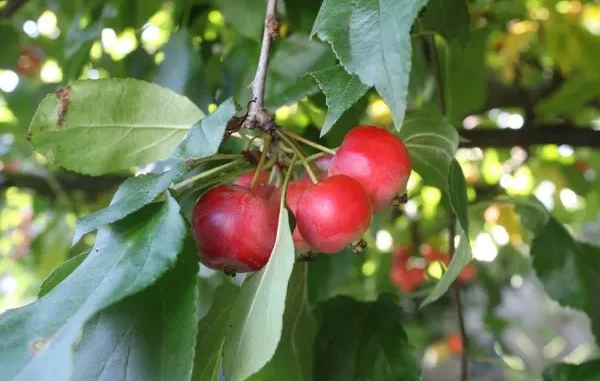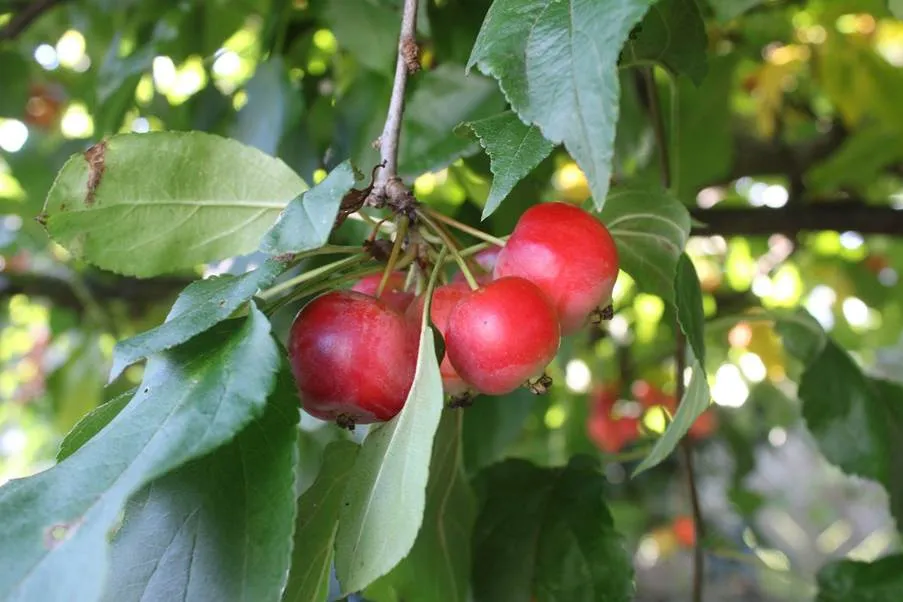

Crabapples are like the little cousin of the apple. They look the same, grow on similar trees, and they can even be eaten. However, they also have some key differences. For example, they’re a lot more tart than apples, and you’ll find that most people don’t just casually eat crabapples. Plus, they’re a little smaller, which can sometimes make it hard to determine what you’re looking at.
So, what is a crabapple exactly? Well, this article answers that question and a whole lot more. Learn more about crabapples and what they are in our guide below.
What Is a Crabapple?
Crabapples are a collection of apples that grow on trees in the Malus genus, which is part of the rose family, or Rosaceae. Compared to your average apple, part of the Malus domestica genus, you’ll find that they’re a lot smaller and a lot more tart when you bite into them. For these reasons, they’re often used in baking when the recipe calls for a more tart apple flavor, but they have some other use cases as well.
That said, crabapples still share many traits with traditional apples that you’re more used to seeing. For example, they can come in a wide variety of colors, sizes, and even flavors.
What Does a Crabapple Tree Look Like?
If you want to know whether or not you’re looking at crabapples growing on a tree, knowing what that tree looks like is helpful. Sure, you can see that crabapples are smaller than other apples, but traditional apples start small before growing, so keep that in mind.
Now, the crabapple tree has a unique appearance compared to a traditional apple tree. The tree is stiffer and a lot thinner than your average apple tree. The leaves of the tree are serrated, but once they start to flower, you’ll see their true beauty. These trees can have a wide variety of colors, including pink, red, white, and sometimes even a combination of these colors.
Can You Eat Crabapples?
While you can eat crabapples raw, to most people, they’re basically inedible due to their tartness. However, they won’t poison you or anything like that. Instead, crabapples are perfect for cider, baking, and even some jams.
If you want to grow them at home and use them for these foods, we highly recommend doing so because you’ll have more control over the flavor.
Can You Grow Your Own Crabapples?
Yes, you can grow your own crabapples. As long as you have seeds, a grafted tree, or even cuttings. However, if you want to have any level of success, we always recommend using the best crabapple trees.
Using the best trees, grafted trees, or seeds ensures that you have the best chance of growing a crabapple. Otherwise, you may end up with an ugly tree that doesn’t grow any apples.
How to Grow Your Own Crabapples
If you want to grow your own crabapples, don’t worry, we have a few tips to help you with the process. While the process varies depending on the planting method, some tips for caring for crabapple trees include:
- Ensuring they get six to eight hours of daily sunlight.
- Ensure that the soil is drained well and slightly acidic.
- Make sure you water the tree frequently, especially during the first year.
- Keep bugs and other pests away from your crabapple tree.
- Prune the tree to maintain it by removing crossing branches, diseased parts of the tree, and the apples.
As long as you follow these tips, you shouldn’t have any issues growing your own crabapple trees.
So, What Is a Crabapple? Our Final Thoughts
At the end of the day, a crabapple is a small apple, and that’s just about it. Sure, they belong to a different genus than your average apple, but other than that, they’re not too different. The key differences are that they’re smaller, more tart, and grow on thinner trees.
That said, this makes it easier for anyone to grow crabapples, especially because they make beautiful decorative trees. If you plan on growing a crabapple tree, just make sure you have the one that you’re looking for and know what it will turn into, especially if you plan on eating them.






Leave a Reply